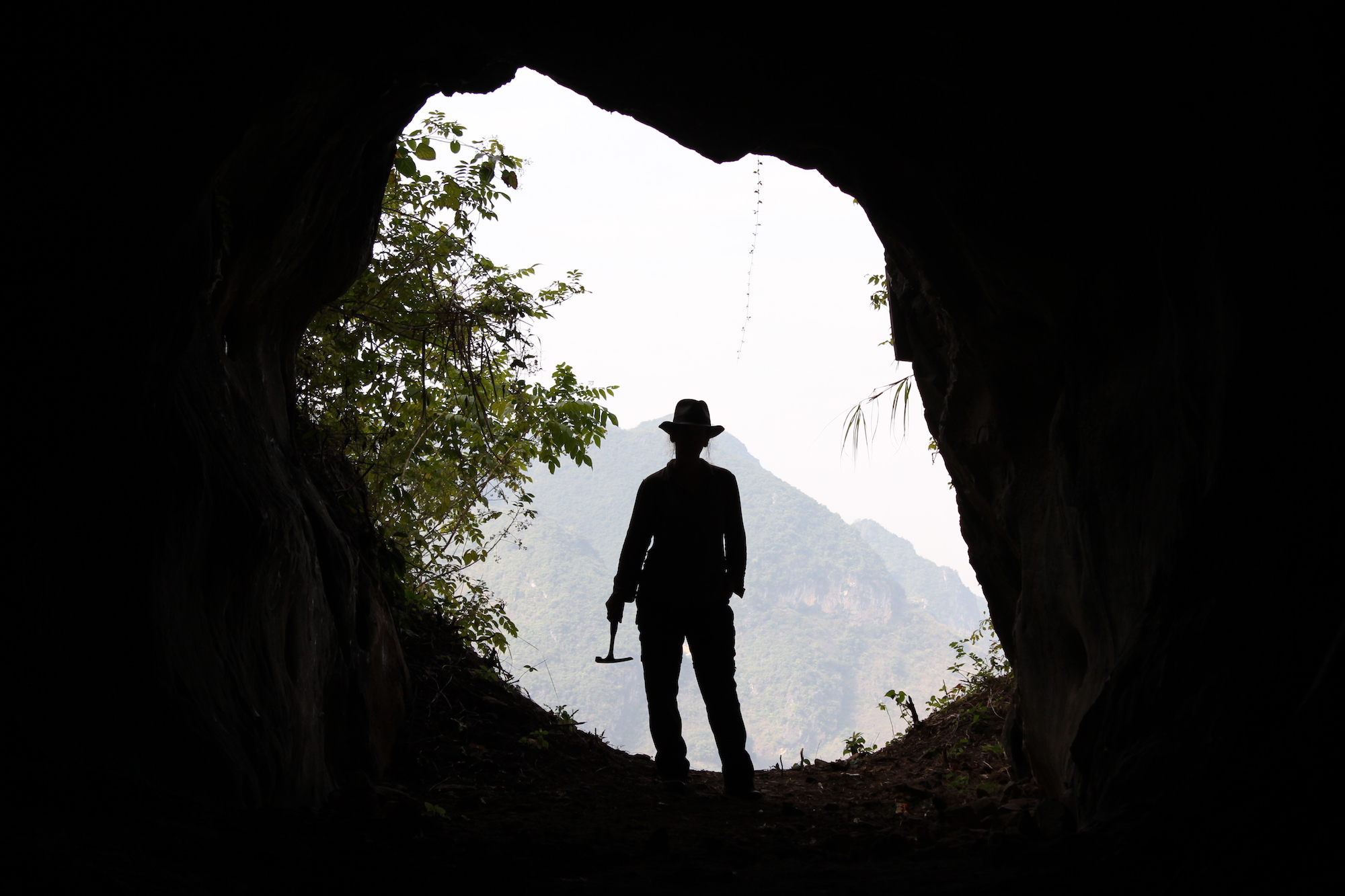 Evolution & Behaviour
Evolution & Behaviour
Connecting Asia to the human dispersal story
An old map, a lost cave and a missing 20,000 years. An adventurous on-field quest reveals crucial insights about early human migrations.

When trying to understand early human migration, timing is everything. We know that humans migrated from the African savannahs through Asia and down into Australia, and this journey is seen as one of our greatest human accomplishments. But we still don't know exactly when we arrived in each continent.
Piecing together small scraps of evidence has resulted in a wide range of interpretations, but the most commonly held belief is that modern humans (Homo sapiens sapiens), that would have looked very much like ourselves, left Africa by ~100'000 and arched across to Australia by 65'000 years ago.
The timing of this journey suggests they must have been on the shores of Southeast Asia prior to 65'000 years ago. But the arrival of our ancestors in Asia is where the timing becomes controversial. The physical evidence of human presence (Niah Cave, Borneo; Tam Pa Ling Cave, Laos) dates back to 45-46'000 years ago, but proof of an earlier presence in Asia has remained elusive - until now.
Scientists from Australia, Indonesia, the Netherlands, and the UK, recently dated the missing evidence that connects human dispersal from Africa round to Australia. This research, published in Nature, provides evidence for a human presence in Southeast Asia between 73-63'000 years ago - almost 20'000 years earlier than previously thought.
We can now confidently place modern humans on the island of Sumatra before 63'000 years ago - when evidence suggests they were making the crossing to Australia. This evidence has been greatly anticipated, but has been a long time coming.
The site where the missing evidence was uncovered, Lida Ajer, was a "lost cave" excavated over 120 years ago by the "Java Man" discoverer Eugene Dubois, a Dutch palaeoanthropologist. Though his findings are not lost, now housed in the Naturalis Biodiversity Center in Leiden, the Netherlands, the exact location of the cave Dubois had found had been lost to scientific and even local knowledge.
Rokhus Awe Due, myself and archaeologists from ARKENAS Padang traipsed through a tropical jungle armed with a copy of Dubois';s 120 year old map to a lost cave, and rediscovered this lost archive of evidence that was crucial to the human dispersal story. We stumbled upon the cave almost by accident, the clue being a large calcite column matching Dubois's rough sketch.
We could have been in the plot of an Indiana Jones movie.
But why was Lida Ajer so worth finding? Nestled in amongst the dense array of orangutan, sun bear and gibbon teeth, Dubois also found 2 human teeth that were thought to be of great antiquity. To prove him right we were determined to rediscover and date the site 120 years after Dubois had first made the discovery.
The Lida Ajer teeth had already been identified as modern human almost 70 years earlier by Hooijer, a Dutch palaeontologist studying orangutan fossils. While the study was convincing, it lacked a comparison with recently discovered human fossils.
So we decided to reanalyse the teeth using state-of-the-art imaging techniques, allowing us to study the enamel thicknesses and the boundaries between the outer enamel and inner dentine layers, which are critical for distinguishing human from other primate teeth. We applied a barrage of dating techniques to the sediment around the fossils, to overlying and underlying rock deposits in the cave and to associated mammal teeth.
These analyses indicated that the teeth are from modern humans that were laid down between 73-63 thousand years ago, indicating that they were present on the Sumatran landscape at that time.
This new evidence for a modern human presence in Sumatra 20'000 years earlier than previously accepted represents a missing link in the global dispersal story. But the location of this evidence was unexpected.
It is generally accepted that modern humans dispersed via coastal routes due to ease of movement and plentiful resources. Rainforests are considered difficult environments to live in - they require technological innovations and sophisticated hunting techniques. The finding of a modern human presence in a rainforest location around 73-63 thousand years ago suggests that these skills were acquired by that time. It also means that our ancestors dispersed much quicker and over a wider area, were more resourceful, and had more skills than we have ever acknowledged.
By using these techniques we have thus been able to finish what Dubois had started all that time ago and ensure that Southeast Asia evidence can take its rightful place on the timeline of modern human dispersal from Africa to Australia.
Original Article:
Westaway K, Louys J, Awe R, Morwood M, Price G, Zhao J, Aubert M, Joannes-Boyau R, Smith T, Skinner M, Compton T, Bailey R, van den Bergh G, de Vos J, Pike A, Stringer C, Saptomo E, Rizal Y, Zaim J, Santoso W, Trihascaryo A, Kinsley L, Sulistyanto B. An early modern human presence in Sumatra 73,000-63,000 years ago. Nature. 2017;548(7667):322-325. doi:10.1038/nature23452.Next read: Did Homo naledi meet Homo sapiens in South Africa? by Hannah Hilbert-Wolf , Paul Dirks , Eric Roberts
Edited by:
Dr. Reinier Prosee , Senior Scientific Editor
We thought you might like
More from Evolution & Behaviour
Feisty fish and birds with attitude: Why does evolution not lead to identical individuals?
Aug 31, 2024 in Evolution & Behaviour | 3 min read by Lukas Eigentler , Klaus Reinhold , David KikuchiRudimentary form of syntax present in chimpanzees
Nov 29, 2023 in Evolution & Behaviour | 3 min read by Maël LerouxAn incredibly massive ancient whale skeleton reveals a new way to become a giant
Nov 27, 2023 in Evolution & Behaviour | 4 min read by Olivier LambertVikings and Migrants: Unravelling Scandinavia's Genetic Mosaic in the Viking Era
Nov 13, 2023 in Evolution & Behaviour | 3 min read by Anders Götherström , Ricardo Rodríguez VarelaEditor's picks
Trending now
Popular topics


